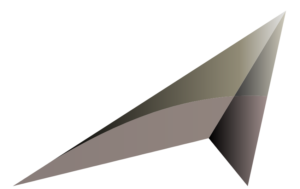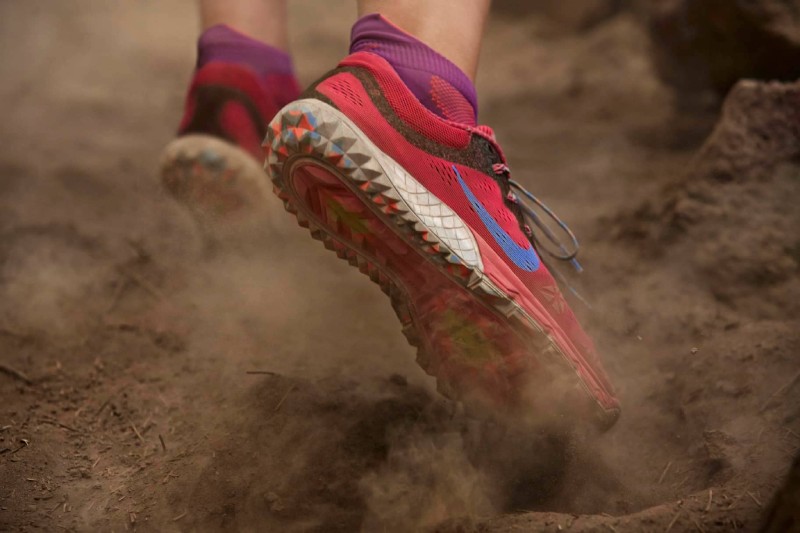Trail running shoes are definitely a separate category of running shoes. They are designed for running on dirt, rock, sand, clay and other uneven surfaces. Don’t want to make the choice of new shoes as unpredictable as playing blackjack online? Then let’s talk about the nuances and features of these shoes. And at the same time, we will help you choose a pair in which you can safely and happily run on everything that does not look like asphalt.
Table of Contents
Features of Trail Sneakers
Let’s take a closer look at how trail running sneakers differ from regular asphalt sneakers:
- A treaded outsole allows you to move more confidently over dirt, gravel, roots and rocks.
- Foot protection. The construction of a trail sneaker is sturdier than an asphalt sneaker. This increases weight, but gives protection from hitting rocks and roots. The upper is more resistant to abrasion.
- Trail sneakers don’t focus much on controlling pronation, as the foot is in constant adaptation to different stride lengths and staging on different surfaces at different angles. But these sneakers prevent excessive rotation of the foot and its departure sideways, in a position where ankle dislocation is possible.
Types of Sneakers
Now it’s clear why we need special trail sneakers. But in fact, the surface is different in different places: the stone paths of the Alps or the Caucasus aren’t a park at home with fine gravel. That’s why we tell you about the different types of trail sneakers for different kinds of surfaces.
Light Trail
Basic sneakers for rough terrain and parks, which become the first choice of a beginner trail runner. Designed for relatively uniform surfaces. Imagine paths in a park, woods at home, and the tarmac of a country road, for example.
These shoes will be closest in weight and design to sneakers for running on asphalt roads. The characteristics of this category can be described roughly as follows:
- Modest protection from rocks and roots.
- Low weight (therefore, it will be easy to maintain a fast pace).
- Moderately stiff construction (provides a stable foot position).
- Small tread for traction on tamped and dry surfaces.
- Cushioning varies from model to model.
Forest or more rugged trail
These sneakers are made for running on forest paths, gravel with large stones, and forest roads. That is, almost anywhere where there is no asphalt. This category as a whole is a little more versatile than the previous one when running off-road. It’s distinguished by the following details:
- Toe and foot protection with special plates inside the shell.
- Rugged upper materials to protect against branches, stones and roots.
- Elastic cushioning to absorb shocks after landing on rocks and steep slopes.
- High protrusion tread that allows you to cling to even the most slippery surfaces.
- Overall sturdy construction designed to hold and stabilize the foot on unstable surfaces.
The Ultimate Off-road Experience
If you’re planning to run where mortals are afraid to set foot, off-road sneakers are right for you. They have the following features:
- More resilient materials (e.g., a polyurethane foam midsole rather than the EVA foam used in most sneakers).
- special side-torsion stiffness, super-stable foot positioning, due to the strong rigidity can chafe, so be sure to try on before buying.
- Many waterproof models (running in these shoes involves storming fords and swamps).
Many tourists buy these sneakers to remove a few hundred grams from their equipment. These sneakers may indeed be suitable for such activities, but with one important caveat: they will quickly – much faster specialized hiking shoes – to fall apart.
Cushioning
Cushioning in sneakers has come in an interesting way in recent years. For a long time there were no innovations, then suddenly appeared and became popular sneakers with flat soles and “natural” cushioning. They were replaced by the completely opposite kind of shoes – with a huge foam cushion not only under the heel, but also in the nose. Now the market is full of models with all three types of cushioning – and one in between.
“Barefoot”: a shoe with a flat sole (although not as flat as a Converse sneaker). Such a shoe allows a better feel of the surface, as well as your own technique and biomechanics.
Minimal cushioning: this shoe is a good option for runners who want better surface feel but don’t want to give up a little cushioning.
Moderate: a traditional sneaker with enough foam to run comfortably on dirt and rocky trails for almost everyone.
Maximum: another departure to the extreme, which has many adepts and fans. In their opinion, such shoes take the load off the joints and ligaments and even relieve muscle fatigue. But opponents argue that the excessively large and soft foam layer “steals” the power of repulsion, thereby slowing down the runner (and even making the ligament apparatus weak, reducing its adaptive capacity). In general, shoes with maximum cushioning need to try on their own, as well as make a choice.
Choice of Drop
The drop, the heel-to-toe drop, is directly related to the amount of cushioning foam. The drop in trail sneakers ranges from 0 to 12mm (or more, depending on the model).
Barefoot sneakers have, as you can easily guess, a 0mm drop.
Minimalist shoes usually have a drop of 0 to 4 mm.
The other two categories have a drop of 4 mm or more.
Look at the shoes you are currently running in. If you feel comfortable in it and don’t injure yourself, then the drop is probably the right one there. Choosing a similar drop in your new shoe will help avoid biomechanical abnormalities.
Keep in mind: even if you buy the same model of shoe, you need to double-check this parameter. Sometimes brands make changes in the characteristics of a particular model.
If you don’t have running shoes, casual shoes, sneakers, boots will do as a reference point. Most of these shoes don’t have a lot of drop. You’re probably used to that, so you can start trying on running and trail shoes with low-drop models. You’ll know what you like and what fits your biomechanics best when you’ve run in both flat and heeled shoes for a few workouts each.
Flat shoes promote a greater impact load on the front and middle part of the foot. This gives good foot placement stability as well as better balance and engages more muscles. This biomechanically appealing detail attracts running enthusiasts and fans of innovations in the industry. But we must understand: such shoes are not suitable for everyone, and many and in general can be harmful due to the peculiarities of the structure of the musculoskeletal system, ligaments and muscles.
If you are thinking about switching to barefoot shoes or minimalist style, don’t rush. Plan for a few months of transition and be prepared for some discomfort during the physical adjustment.
But there are also moderate to maximum cushioning shoes with low drop. Transitioning from shoes with good cushioning in a high heel to shoes with good cushioning in a low heel isn’t a quick process either and isn’t suitable for everyone either. It entails some discomfort and will also require a transitional period.
Fit and Feel
To summarize, the fit and feel of the sneaker is more important than all other parameters, including supination, drop, and the level of traction of the sneaker. The shape and length of the arch of the foot, the volume of the foot, the length of the toes and the placement of the knuckles will all have an impact on fit.
Fit. Each brand makes its own special shoe, applying a unique technology to the development. Therefore, the sneakers from firm to firm differ in fit exactly because of the lasts. It’s a good idea to try on different brands.
Foot Size. It changes during the day, it changes with age. The most reliable is to measure the length of your feet with a tape and to be guided by the length in millimeters when choosing a sneaker. During the run the toes may swell and chafe, and this should also be taken into account when trying on.
General physical characteristics. People with a large figure should pay attention to shoes with cushioning and more protection. Those who are slimmer often choose lightweight, responsive shoes. Here we will also mention the peculiarities of the musculoskeletal system: flat and lightweight shoes are not necessary for people with spinal and pelvic problems (they have a higher impact load) and so on.
Evaluation and help from outside. There are thousands of different models of running shoes, and you need to choose one or two pairs. In good running stores, consultants and experts can help you determine the most appropriate brand of running shoes simply by the appearance of your foot (with or without wearing). Be sure to tell the salesperson about your possible diseases and peculiarities: for example, flat feet, bunions, plantar fasciitis, lower back pain, and so on.



